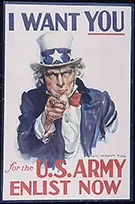D-Day the Invasion of Normandy
Allied Forces Backstory
The Invasion of Normandy began on June 6th 1944 and ended on August 1944, and was a joint effort by all of the Allied Forces. Comprised of 156,000 British, American and Canadian forces, D-Day was an invasion that required a massive amount of deception and tactics. Germany expected an invasion of sorts, but had no idea where it would come from. Hitler ordered Officer Erwin Rommel to build up the Atlantic Wall, a defense that would stretch several thousands of miles. The Allied Forces were already in talks of a cross-Channel invasion, so both sides had the right idea.
General Dwight Eisenhower was made the commander of the D-Day operation on January 1944, and began to oversee strategies for the assault. Part of the plan was to misdirect Hitler from where the actual invasion would take place. More importantly, most of the false info led the Germans to believe that Pas-de-Calais was the actual target rather than Normandy. The Allied Forces used fake equipment, double agents, spies, and even fake radio transmissions. The best deception of them all was having the renowned George Patton lead a phantom army in England; all of the pieces were finally in place.


Germany Backstory
All of the deception played a big part in how Germany handled the actual battle. With the invasion sneaking in through the water, 5,000 ships were deployed with a good 11,000 aircraft for support. The early parts of capturing Normandy was fairly easy, with the Allied Forces splitting up to capture key checkpoints. There was some resistance on one side of the beach, but it was eventually dealt with by the Americans. D-Day started at 6:30 a.m. and was all but over by the end of the day, with troop’s losses for the Allied Forces counting at more than 4,000.
The earlier diversions were still confusing Germany, as Hitler considered Normandy to be another ruse. Even when reinforcements came to help Germany, they were so out of position that it put them at an even worse disadvantage.
The Allied Force were in full control of Normandy’s beaches, and on June 11th the next phase was ready. Now with 326,000 troops, over 100,000 tons of equipment and 50,000 vehicles, the Allied Forces marched forward and continued fighting until they forced a German surrender on May 8th 1945, officially ending the Nazi reign in Germany.

Why Was D-Day Important?
The invasion was an offensive maneuver that was so suffocating that it prevented any chance of a counterattack. Through careful planning the Allied Forces mounted an Army 5x the size of Germany’s in a week, and within a crucial point in their territory. The blow was so crushing that it tarnished Hitler’s reputation for good, finishing the work that the Russians started with their defense of Stalingrad.

Who Was Affected?
It can be said that Germany was affected the most, as it led to their freedom from Nazi Germany. The many beliefs of the Nazi uprising was not the majority of the German people, as evidenced by the many people under Hitler who often betrayed him or tried to bargain for peace.

Names to Remember
Adolf Hitler was born on April 20th 1889 and was the dictator of Nazi Germany. His invasion of Poland in 1939 started World War II, and he was a major figure in many of the human atrocities before and during the war. Hitler served in World War I and was a popular and decorated officer for Germany. A week before Germany surrendered due to the destruction of D-Day, Hitler took his own life. This was on April 30th 1945, after many failed attempts to keep those under him from surrendering to the Allied Forces.

Important Facts
Here are some important things to remember about D-Day.
- Over 3,200 reconnaissance missions were used to develop the plan for D-Day
- Bad weather postponed the attack from its original June 5th date
- 100,000 workers were used to create Hitler’s Atlantic Wall
- Even with careful planning a lot of the paratroopers were dropped in the wrong place

Conclusion
D-Day was crucial in helping to end World War II. It took the combined teamwork of the Allied Forces to finally make the end of the war a reality.



